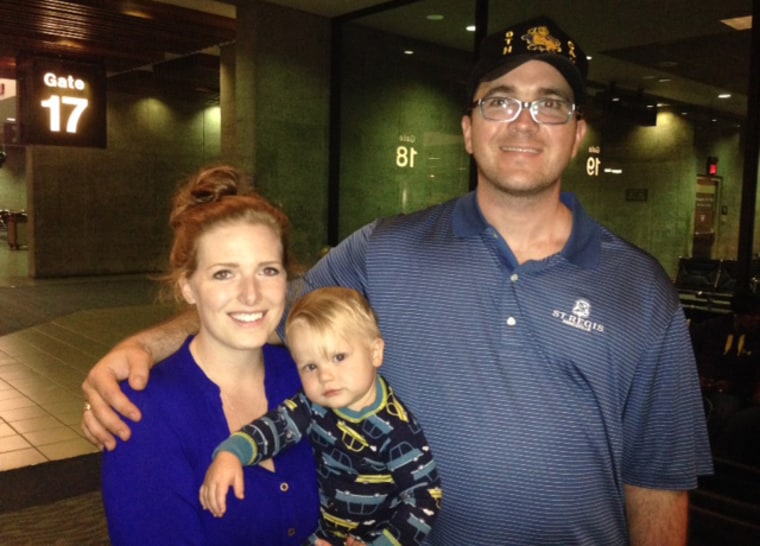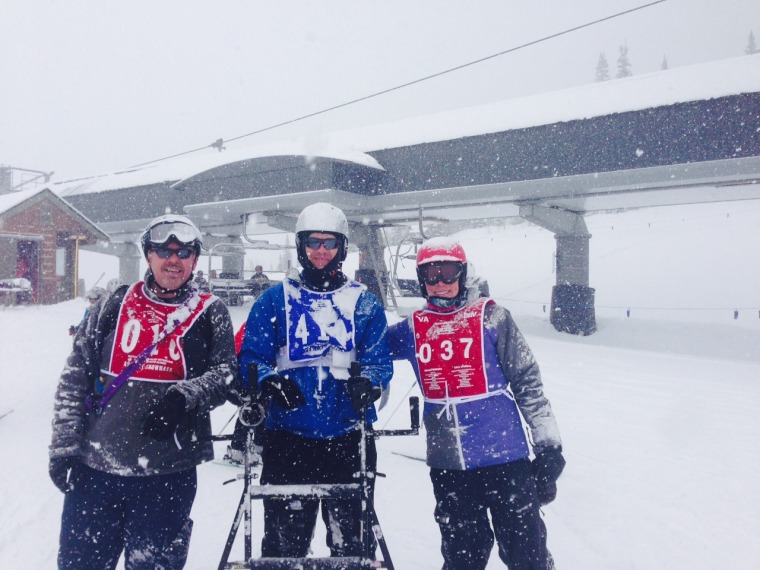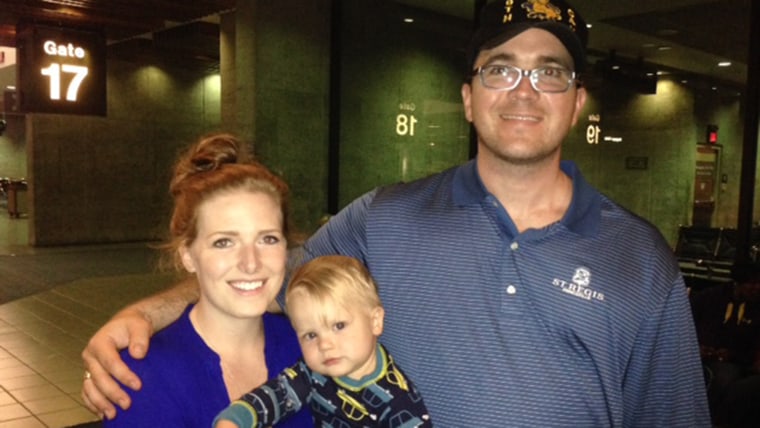
Sgt. Patrick Zeigler had finished two tours in Iraq and was 12 days from starting Officer Candidate School when on Nov. 9, 2009, he was shot in the brain by Nidal Malik Hasan, who killed 13 people and wounded 31 others at Fort Hood Army Base near Killeen, Texas. Last week, there was another shooting at Fort Hood, where a gunman killed three and wounded 16. In telling his story and describing his four-and-a-half-year recovery, Zeigler speaks to those Fort Hood victims who are going through what he did, but also to anyone who appreciates the fortitude required to battle back from one’s darkest hour.
I remember him standing up, yelling "Allahu Akbar." He turned and started shooting. I was the second or third person shot and I was sitting in a chair. When the bullet hit me, I started crawling on the floor. That’s when he came up and shot me three more times. I was told later by the paramedics that I said, “I’ve been shot and I need to go to the hospital now. Please get me out of here.” But I don’t remember that part. I’m also told that I talked to a doctor at the hospital and described the shooter and what had just happened. They sedated me and put me on a chopper that flew me to a hospital in Temple, Texas. I went into surgery right away and they took out 20 percent of my brain. That part of the skull had been shattered and bone and metal had gone into my brain.

Two weeks later, I was put in a rehab center in Austin, Texas. I spent 7 months learning how to walk again. Then I had my next brain surgery in January 2010. After the fact, something went wrong with the mesh implant they put in my skull. I was comatose and then in and out of consciousness for two weeks. I had to go back to the hospital to have it removed. So I had to relearn to walk again.
Every time I had a major setback, I had to learn how to walk again. It was a total of four times. My whole left side was paralyzed since I was shot on the right side of the brain. My entire left arm and left half of my back is paralyzed, as is my left leg from the knee down. My hip and knee only have minimal use but it is enough to walk with a leg brace. That said, I’ve learned how to function the way it is. I bike using a recumbent stationary bicycle. I work my leg muscles with that, about three times a week. Now that the weather is better, I hope to start riding on a custom-made road bike I got where all the controls are on the right hand side.
Recently, I learned how to ski at the National Disabled Veterans Winter Weather Sports Clinic in Snowmass, Colo., which was put on by the Department of Veterans Affairs and Disabled American Veterans. I had only been once before the shooting. I practiced walking around with the ski boots and then used what they call a ski sled. It’s a stand up frame with handles on each side. The trainers were on either side of me and I was able to go down the mountain three times. Another incredible experience there was that I was was able to jump off a diving board for the first time since I got shot. I was a little wobbly on the board but I just went for it. It was like a leap of faith — I jumped for my life. It was just amazing to me.

My emotional recovery from the shooting has been a process, too. The second year after it happened, in 2011, I had some suicidal moods —I viewed everything as negative. In 2012, I was a bit better after being in a rehab center in California. I went back in the hospital — Walter Reed Medical Center — last year because of complications from my brain injury. I was in a traumatic brain injury unit the whole time and underwent intensive therapies to try to help me be more independent in my functioning. I also had medication issues: I was on so many of them, and it was just messing with me.
I have hypersensitive pain on my left side, and occasional headaches, but I consider myself very lucky at this point. I have had a much more remarkable recovery than anyone expected of me after being shot in the head. Mentally, I’ve been getting a lot better. I’m a lot more positive than I was a few years ago.
There are two bright parts to my recovery. One is my wife, Jessica. She has been there from the beginning — she was my girlfriend when the shooting happened. She’s just a very compassionate and passionate person. She’s just so selfless and loving. When I first learned to walk again, I had a car pick us up from the rehab center and take us to dinner. I had a ring, and though I couldn’t get down on one knee, I told her, “I love you very much. Will you take care of me for the rest of our lives?” I’m so lucky she said yes.
The other brightest part of my recovery would have to be the birth of my son, Liam, in 2012. I wasn’t sure I’d be able to interact with my son like a normal father does. But I can hold him and hug him. He’s 18-months-old now and all over the place, but I try my best to keep up with him. I struggle with my physical limitations but still try to act and feel like a normal father.
We recently added a new member to the family — Ranger, our service dog. He’s a black lab mix and he’s a great companion who pretty much watches my back wherever we go. If I fall down on the ground, he can help me get up. If I drop something, he will pick it up. Liam loves Ranger and it’s great to watch the two of them play together.
When I heard about the most recent shooting at Fort Hood, it was an eerie feeling. I just thought, “How could that be true? How could it be happening again?” I watched the media coverage and found early in the reporting that this was not the same situation. In 2009, it was a Muslim extremist who killed 13 people. This time, it seems to have been more of a psychological issue, someone who was on psych meds and was having a really rough time and kind of lost his mind. Still, it was very shocking.
I think when it comes to surviving something like this, military training comes into play. Immediately after I got shot, everyone thought I was going to die. Except for me. I knew I had to fight my way back to normality. You just have to do your best and it’s all about how much effort and passion you put into getting better.
I would tell the wounded from last week's shooting that you can’t feel sorry for yourself. You have to count your lucky stars that you weren’t one of the deceased. You have to appreciate life for everything it’s worth. Don’t take things for granted like you used to. You don’t know how long your recovery is going to take, so just take your time and do it right. Trust yourself and those around you and just believe it’s going to be better.
Patrick Zeigler's story was told with the help of Jessica Zeigler and TODAY.com's Kavita Varma-White.
